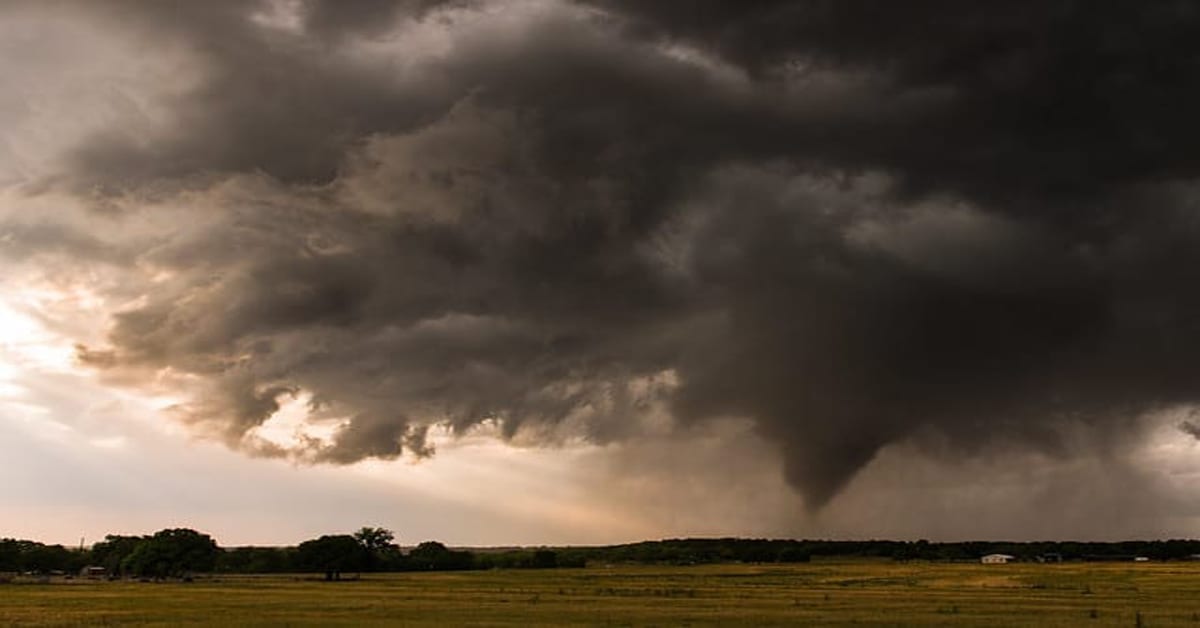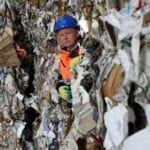Continuing our Planet in Crisis series, we shall discuss one of the pervading issues worldwide: work at risk from climate change.
Temperatures are rising. The ice caps are melting. The sea levels are increasing. The world is heating.

These are the most evident and the most common scenarios that we undeniably are facing as of today. The discussion about climate change already started a long time ago. However, it seems that people are not bothered about the negative consequences that are happening at the present time. Ironically speaking, even though some of us already know what activities contribute to the worsening of the world, we, without shame, do not feel guilty or even have the conscience to halt it.
I’m not generalizing but try asking yourselves, have you been doing anything to limit yourself from contributing harm to the planet? Does it make a huge impact? Does it influence others to do the same? You want to at least lessen your carbon imprint, but are you willing not to use your air conditioner when it’s getting hot? What are the reasons that make us hesitate to give up luxury just for the world’s betterment?
It is may be because we want to have a convenient life, generate more money, and achieve a wealthy lifestyle. To do this, it diverts our attention to achieve what we all want to have, not minding who and what things we need to sacrifice.
We always hear about climate change. We already witnessed the negative impacts it causes. We already knew who are affected. We are already aware what future we are facing if this problem continues to run. We are certain and can already feel its wrath, but how come we are still making a little-to-no effort in saving this planet? Are we forcing ourselves to be blind? Or just waiting for our doom’s day to come?
Climate Change: “I’m here to remind you again”
Even though we are too fed up of defining climate change, in contrast, climate changes do not feel any hint of tiredness in always reminding us. The vast spread-out of wildfires to our forest, the cities that begun to sink due to rising sea level, the animals losing their habitats and food sources that’s why some are starting to bother human communities. All of these are reflections of what we did.
Melissa Denchak of NRDC defined climate change as a significant change in weather condition. It’s either the weather is becoming wetter, drier or warmer for several decades or more. Unlike weather condition, climate change is a longer-term trend.
So, how does climate change work? Denchak also stated that it is when the planet absorbs the sun energy but failed to release it back to space due to atmospheric gases that traps the heat. Scientifically speaking, both natural and human reasons are considered as factors on how our climate system works. But which one contributes the most?
Workers are at risk!
Every single creature living here on earth is affected by the fury of climate change. Hundreds of unfortunate events are already happening, as reported on different televisions in every part of the world. East, West, South, and North, every inch of our planet is affected by this dilemma. We are already aware of what are its effects to ice caps, rain and sunny seasons, to the people and environment.
Among all the victims of climate change, we can say that the worker’s population is at the most risk. According to the US National Library of Medicine (National Institutes of Health), workers are generally exposed to greater intensities on the harsh weather for a longer period, which the public can choose to avoid. Numerous workers especially those who are exposed to outdoor activities are greatly affected, such as agricultural workers, construction workers, emergency responders, commercial fishermen, paramedics and firefighters, transportation workers etc.
In addition, aside from workers that are extremely exposed outside, indoor workers working inside their offices/companies are not exempted too. Given how chaotic the planet is at the present time, the worsening heat and air pollution and other factors cause stress and uncomfortable condition to our workers. Thus, inevitably may negatively affect their job performance.
There are numerous ways of expressing how climate change significantly affected the workers’ sectors. These are the impacts of work at risk from climate change:
(i) amplification of known safety and health hazards, such as severe weather events, heat, wildland fire, infectious disease, and air pollution;
(ii) new, unanticipated, or unrecognized hazards, such as widening infectious disease vector ranges, rise in pesticide use, and increases in aeroallergens; and
(iii) hazards that result from the human response to climate change, such as the development of renewable energy, recycling, carbon sequestration, “green industries,” and changes in how structures and communities are built and maintained
Undeniably, even without thinking further. We can say that the prominent and most obvious detriment that our workers experience is health-related problems. The examples given by the US National Library of Medicine (National Institutes of Health) are “asthma, respiratory allergies, and airway diseases; cancer; cardiovascular disease and stroke; heat-related morbidity and mortality; chronic kidney diseases of non-traditional origin; mental health and stress-related disorders; neurological diseases and disorders; water-borne diseases; weather-related morbidity and mortality; and vector-borne, zoonotic, and other infectious diseases, such as Lyme disease, Valley Fever (coccidioidomycosis), chikungunya, malaria, and dengue.”
Climate change conditions affecting workers
Climate change also affects the working conditions and overall productivity of workers worldwide. Here are some of the conditions caused by climate change that directly affect our workers. These are:
Extreme temperatures
Inclined with the rising temperature of our planet is also a test in our temper. The scorching heat is truly bothering; it often affects our moods and behavior. Truthfully speaking, if the weather is too hot to the point that we are getting uncomfortable, we tend to become irritated and angry.
One’s exposure to an abnormally hot environment causes heat stress that may result in heat-related illnesses such as heat stroke, decreased chemical tolerance, and fatigue. With this, imagine how outdoor workers exposed under the heat of the sun and indoor workers without well-ventilated offices are feeling. Imagine the sacrifice just to do their living.
Air Pollution
Due to different air pollutants that we are responsible for, our air will never be the same. The primary target of air pollution is attacking the respiratory system of people and caused allergy disorders. Having asthma and severe allergic reactions became normal scenarios for our workers.
Extreme Weather Events
Extreme weather events equate to having uncontrollable natural disasters such as landslide, flood, drought, lightning, and storms. These out-of-league phenomena may cause unanticipated accidents to the workplaces (offices, infrastructures) or during the actual jobs (emergency responses) that may risk their lives. An example is the physical injuries acquired by workers due to incidents while working. Also, this is very disadvantageous especially to those who are working in the agricultural sectors as this will pose a hazard to their living.
Vector-borne diseases and other biological hazards
The changing temperature of the planet not only affects us humans but also the other living things that coexist with us. It affects the habitats of vectors, pathogens, hosts, and allergens, allowing them to distribute themselves into the community without us knowing.
The most popular example is the increased population of insects, making the outdoor workers the most susceptible in having malaria, dengue, and other tick-borne diseases.
Chronic Diseases
A strong case is the epidemic of Chronic Kidney Disease of non-traditional etiology (CKDnT), which is responsible for the death of thousands of workers in Central America. Due to extensive exposure under the heat without sufficient hydration, combined with exposure to pesticides put the sugar cane cutter at the most vulnerable to CKDnT. The alleged primary contributors to having this disease are dehydration and heat stress.
Solution
Research! Researching the relationship between climate change and the workers will help in identifying what are the need actions to be effectively taken in order to not put our workers in any harm. The research will examine on what basis does climate change affects the health of our workers and develop strategies on mitigating its impact on the welfare of our workers.
Examples are: developing effective controls and adaptation strategies that reduce climate change impact on workers, reinforcing vigilance to identify and control unanticipated hazards, creating new work practices, and using alternative chemicals and materials.
Conclusion
We can say that climate change is both a natural demographic phenomenon and worsen by man-made activities. It is the reason why we experience different devastation within our environment that harms us directly. Climate change affects everyone but our most vulnerable sector is the working population as they are mandated to do their duties regardless of the circumstances.
Due to working, they are more prone to problems caused by climate change than the public. There are different conditions that trouble them to do good performances on their jobs without a threat, thus researching on alternatives that will address this dilemma will be remarkable.




